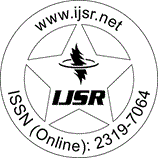Downloads: 92 | Views: 449 | Weekly Hits: ⮙1 | Monthly Hits: ⮙2
Research Paper | Public Health | South Sudan | Volume 9 Issue 7, July 2020 | Rating: 6.9 / 10
Knowledge, Attitudes and Practices of Healthcare Workers regarding Hepatitis B Prevention and Control at Aweil State Hospital in South Sudan 2018
Amin Gordiano Okwahi Tafeng, Dr Jack Rosenzweig, Linda Collazo
Abstract: Introduction: Hepatitis B virus (HBV) is a highly infectious virus responsible for considerable morbidity and mortality worldwide. Chronic HBV carriers can transmit HBV parentally in a hospital setting putting healthcare workers (HCWs) and their patients at risk of infection. Aim and objectives: This study aimed to investigate knowledge, attitudes and practices towards prevention and control of HBV amongst nurses, doctors and laboratory personnel. Objectives were to determine: (a) the knowledge; (b) the attitudes; (c) the practices of nurses, doctors and laboratory personnel; (d) if there are any associations between (1) knowledge and practice, and (2) attitudes and practice; (e) the predictors of HBV vaccination uptake. Materials and Methods: This was a cross-sectional descriptive study. Self-administered questionnaires were distributed to doctors, laboratory staff and nurses at Aweil State Hospital. Results and Discussion: Two hundred questionnaires were distributed and a total of 117 were returned, giving an overall response rate of 58.5 %. More doctors had good knowledge (38.9 % [7/18]), followed by 20 % (4/20) of laboratory staff and 11.4 % (9/79) of nurses. Most staff (100 % [20/20] of laboratory staff; 97.5 % [77/79] of nurses; 94.4 % [17/18] of doctors) had positive attitudes. More laboratory staff (100 [20/20]) displayed good practices, followed by nurses (94.9 % [75/79]) ; and lastly doctors (88.9 % [16/18]). There were no significant associations between knowledge or attitudes and practices. Vaccination was inadequate, with 50.9 % (59/116) of HCWs having received at least one dose, and of these only 61 % (36/59) receiving all 3 doses. Needle stick injuries occurred in 31.6 % (37/117), while 33.9 % (39/115) reported blood or body fluid splashes. None of the HCWs accessed PEP after exposure. Being a laboratory worker (OR: 148.4) or doctor (OR: 125.7) were the only predictors of vaccination uptake. Conclusion: There is need to increase knowledge of H
Keywords: Hepatitis B surface antigen HBsAg, Hepatocellular carcinoma HCC, HBV carrier, Horizontal transmission, Liver cirrhosis, KAP, HBV, South Sudan
Edition: Volume 9 Issue 7, July 2020,
Pages: 746 - 758
